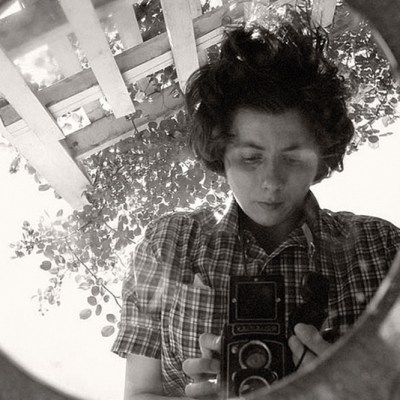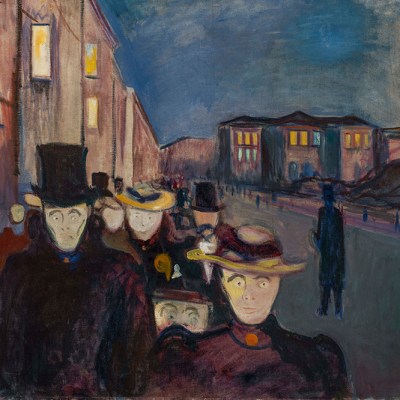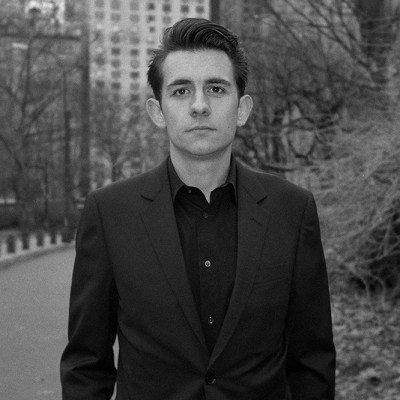From the June 2022 issue of Apollo. Preview and subscribe here.
One of the most important barometers of trends and notions in the art world launches this month in the small, rather nondescript central German town of Kassel. Though Documenta may not be as celebrated or visible as the Venice Biennale, it arguably wields more clout than the Italian behemoth. Documenta’s roots are radical; the vast contemporary art exhibition, which takes place every five years, was founded by Arnold Bode in 1955. The Kassel painter and academic endeavoured, says the Documenta website, to bring Germany back into dialogue with the rest of the post-war world by organising an exhibition dedicated to art of the past 50 years.
Bode brought works deemed degenerate by the Nazis, from movements such as Cubism and Futurism, to a regional and international audience hungry to see masterpieces of modernism alongside art by major contemporary names such as Barbara Hepworth and Joseph Fassbender. The format worked, with 130,000 visitors flocking to Kassel for the first edition. Since then, Documenta has recreated itself each time, holding a mirror to social and political trends. ‘It is the most important forum in the art world for new ideas and considered the most pressured platform from a curatorial point of view,’ says Jane Morris, editor-at-large at the Art Newspaper.
Some editions have become part of art-world folklore. ‘Did you see Carolyn Christov-Bakargiev’s Documenta 13 in 2012?’ is often asked during heated debates on the most influential exhibitions of the past decade. Christov-Bakargiev subsequently took the number one slot in ArtReview’s Power 100 for ‘pitting artists with and against quantum physicists, military historians, biologists, economists and activists’. Aaron Cezar, director of the London-based Delfina Foundation, says there were many memorable moments in the 13th edition, including Ryan Gander’s I Need Some Meaning I Can Memorize (2012), which was nothing more than a breeze blowing through the Fridericianum, the central exhibition venue for all Documenta shows.
Exhibition view from the Karlswiese with sculptures by Christo, Erich Hauser, Shinkichi Tajiri and others at Documenta 4 (1968). Photo: © Documenta archive/Werner Lengemann; © Christo/Shinkichi Tajiri/Erich Hauser
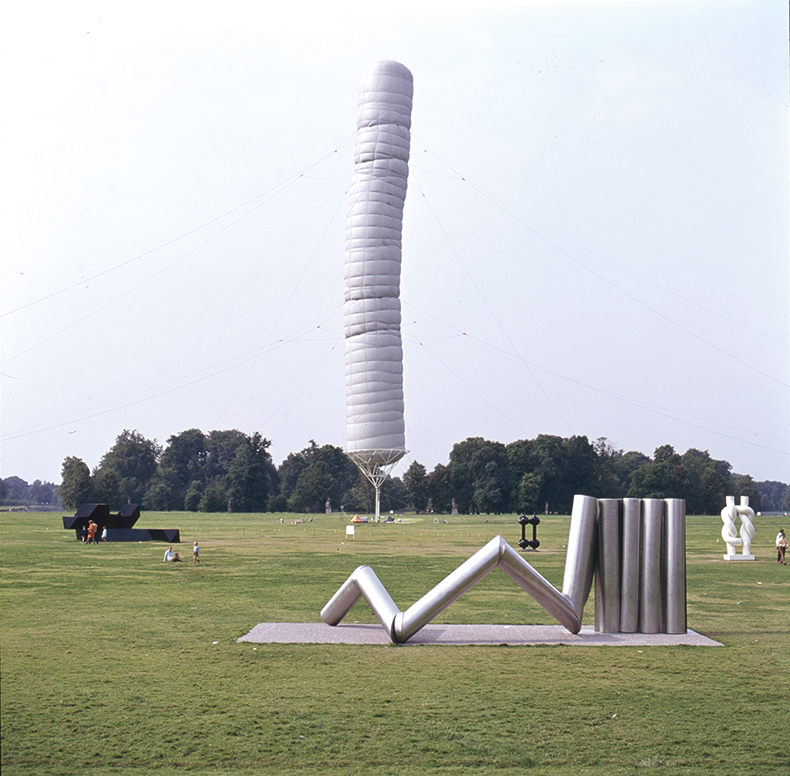
The iteration under artistic director Adam Szymczyk in 2017 ‘served up an altogether angrier and more radical vision’, wrote Morris. His embrace of themes such as gender and sexual rights, and a display of works by the Chilean artist Cecilia Vicuña across three venues in Kassel, now seem particularly prescient (Vicuña won a Golden Lion lifetime achievement award at Venice this year).
The artistic direction of this year’s edition is the Jakarta-based artists’ collective ruangrupa – loosely translated as ‘art space’ – which has based it on the idea of lumbung, the Indonesian word for a collectively run rice barn, which implies fostering collectivity and solidarity. Key principles underpinning the overarching framework include ‘sufficiency’, ‘transparency’ and ‘regeneration’.
This well-meaning enterprise is not shaped by ruangrupa alone. The collective – formed by art students in the mid 1990s – has asked 14 organisations and institutions from around the world to develop lumbung in tandem, building a network of ‘different communities in what is dubbed lumbung inter-lokal’. Since 2020, the lumbung members have subsequently met in various majelis (small and large working groups) to explore how to work together for Documenta 15 and beyond.
Some projects undertaken by the member collectives are hugely ambitious and visionary. Officials at the ZK/U – Centre for Art and Urbanistics in Berlin, for instance, will travel from their base to Kassel on a boat made from the roof of their building, removed during construction of an extension. The Citizenship sea vessel embarks on the 650-kilometre trip from the capital to Kassel at the beginning of June, making 40 stops on the way, enabling crew and locals to ‘pool their knowledge [and] share their schemes for planetary survival’, says a ZK/U statement.
The Sydney-based artist Safdar Ahmed, another participant, welcomes the curatorial approach of ruangrupa. His art practice is drawn from his ‘very individual tastes’, he says, referring to horror films, comics and cartoon art, stressing how most of his work is informed by his volunteering for Refugee Art Project, a non-profit dedicated to supporting asylum seekers through art workshops and collaborations.
Installation view of Thomas Bayrle’s Flugzeug (Airplane) (1982–1983) at Documenta 13 in Kassel. Photo: Barbara Sax/AFP/GettyImages
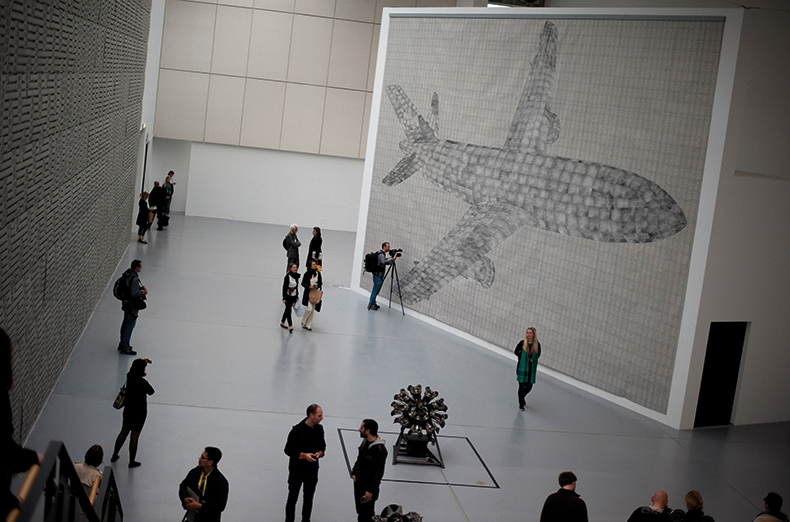
‘My contribution to Documenta 15 is informed by the experience of making a novel called Still Alive, published last year, which is a work of graphic journalism about the way Australia treats refugees,’ Ahmed says. His Documenta contribution also involves a collaboration with Kazem Kazemi, an Iranian heavy metal guitarist who was detained on Manus Island for six years (the offshore immigration detention camp in Papua New Guinea, sometimes called ‘Australia’s Guantanamo’, was formally closed by the Australian government in 2017). ‘A praxis that respects and embeds the role of art in friendship-building and community is something ruangrupa understands and reflects in the model of lumbung,’ he says.
Alex Greenberger of Artnews was struck by the artist list for Documenta 15, which ‘is offbeat and largely devoid of the international art sensations one expects to see at an exhibition like Documenta’. In other words, the exhibition seems to be devoid of the established figures – both commercially and critically – that have dominated biennials and festivals worldwide for the past 30 years. Participating artists are mostly from the global South, with many names unfamiliar to Western audiences, including New Delhi-based Party Office, described as an ‘anti-caste, anti-racist, trans*feminist art and social space’.
A curator based in the UK, who preferred to remain anonymous, says that the selection of participants ‘pushes back against neoliberalism and, though very worthy, chimes with the post-pandemic times by bringing to the fore issues such as climate change and political radicalisation’. This edition has not gone exactly to plan however. In a blog post earlier this year, the Alliance Against Antisemitism Kassel accused ruangrupa of turning the event into a ‘place of anti-Israeli and antisemitic agitation’ by inviting a Palestinian collective, the Ramallah-based Khalil Sakakini Cultural Center, to participate.
Ruangrupa issued a statement saying that ‘Not only the principles of freedom of expression but also a resolute rejection of antisemitism, racism, extremism, Islamophobia, and any form of violent fundamentalism are the underpinnings of our work.’ But the row continues to overshadow this edition after a discussion series called ‘We need to Talk! Art – Freedom – Solidarity’, which should have addressed the allegations, was cancelled at the beginning of May. Documenta will launch and ‘speak for itself’ as a basis for continuing the discussion in a productive manner, said the organisers.
So is ruangrupa’s curatorial vision the best fit for today? ‘It is important to understand how to create spaces for convening, sharing resources and knowledge, and considering different models to transform the world around us,’ Aaron Cezar says. ‘The whole concept for Documenta is built around these ideas. I think their vision is right for today and breaks away from other editions of Documenta.’ The real test, though, is whether we are still talking about, and debating, its merits and achievements in ten years’ time.
Documenta 15 takes places at various venues in Kassel from 25 June to 25 September. For more details, go to documenta-fifteen.de.
From the June 2022 issue of Apollo. Preview and subscribe here.

